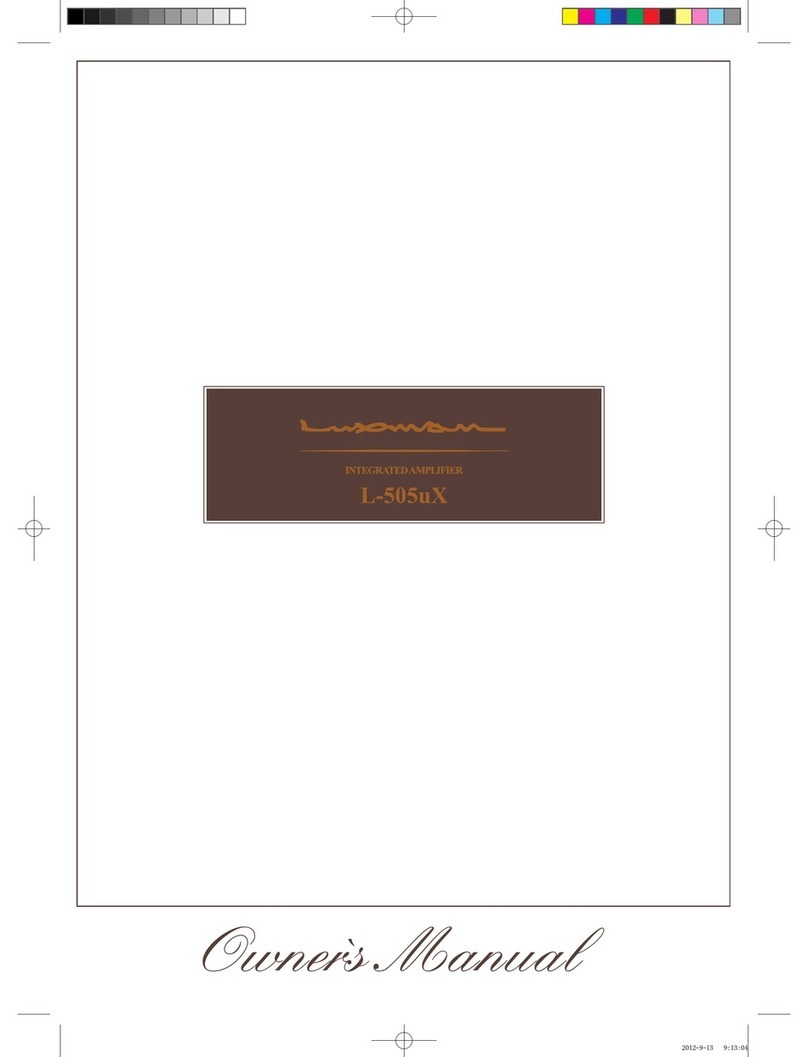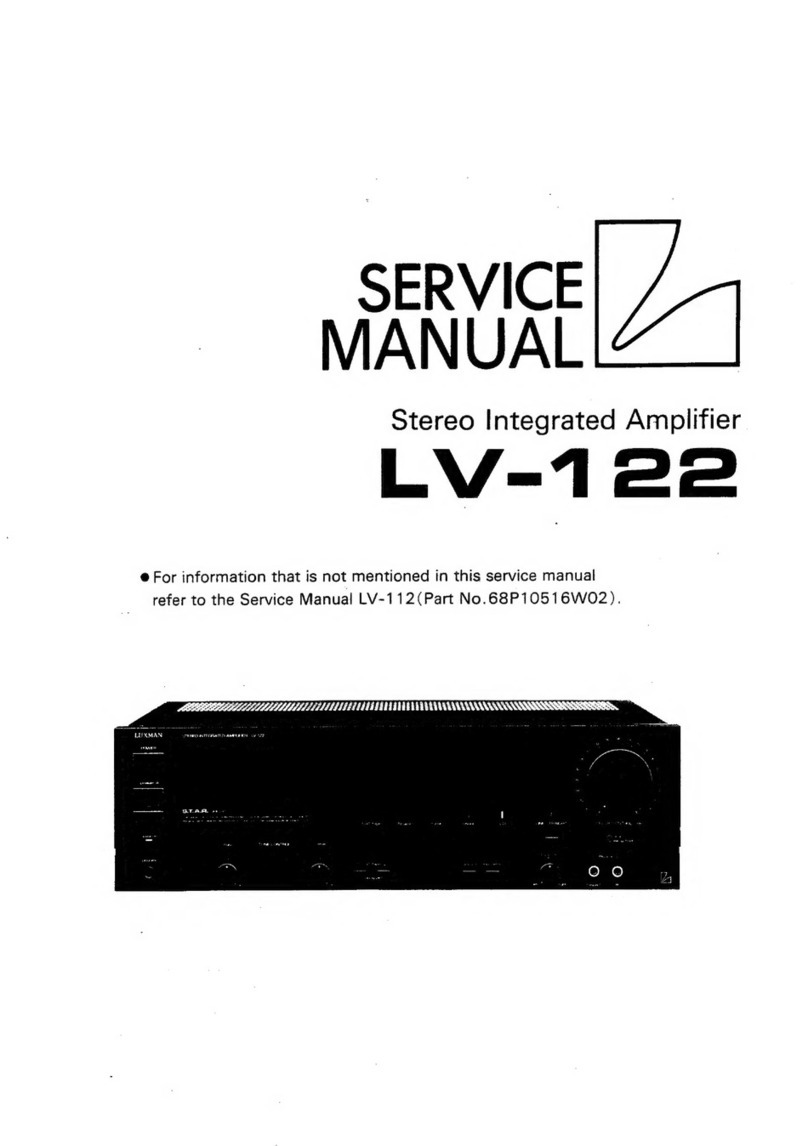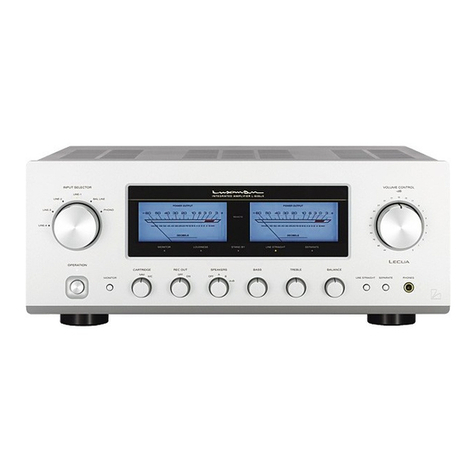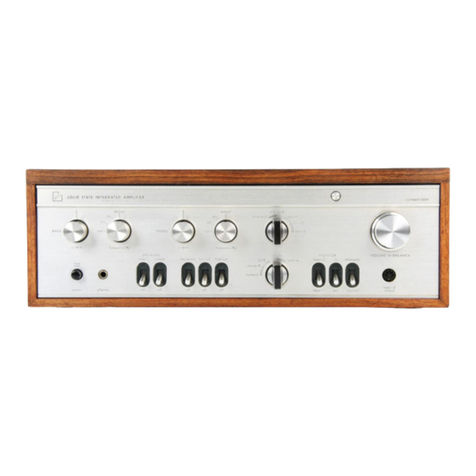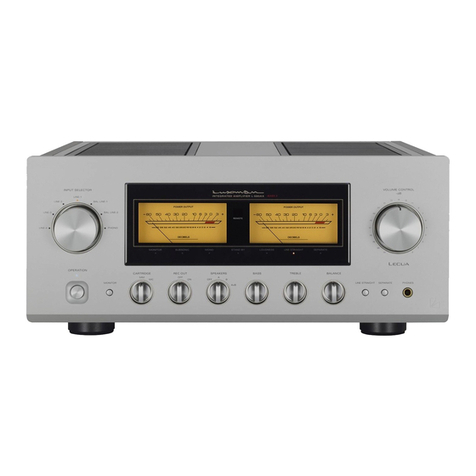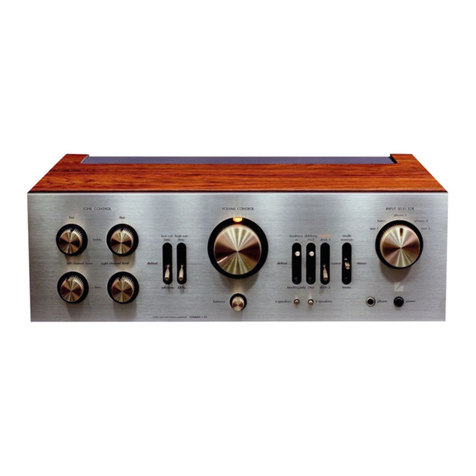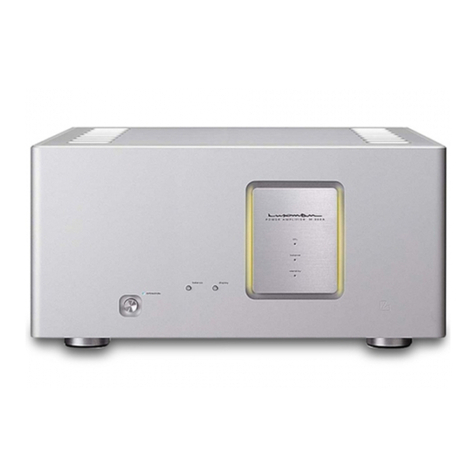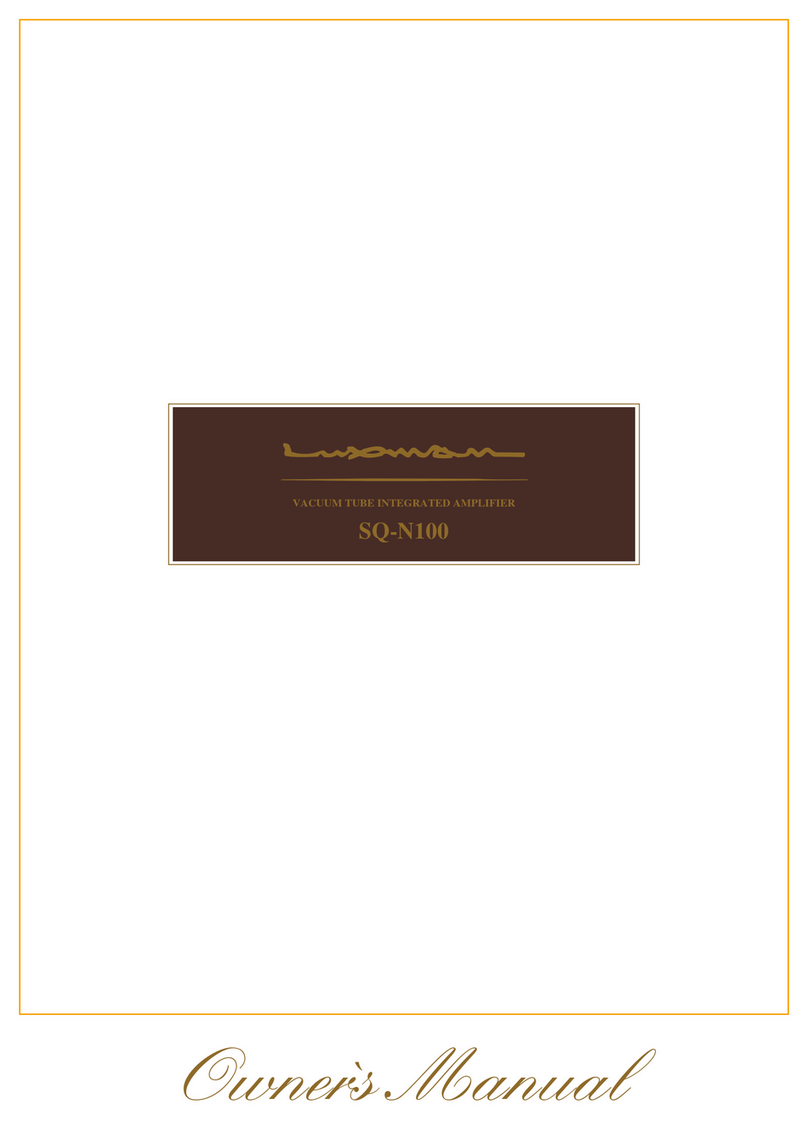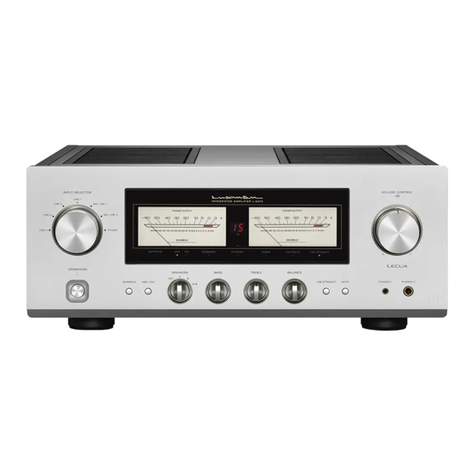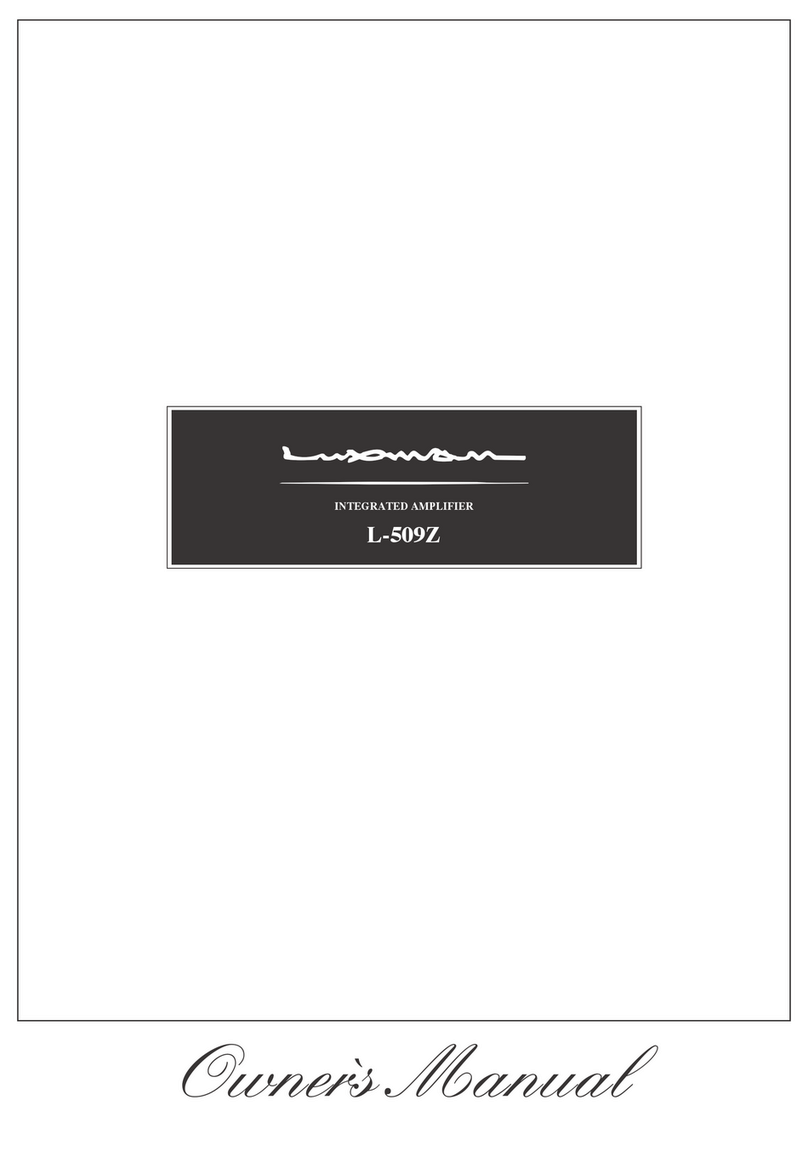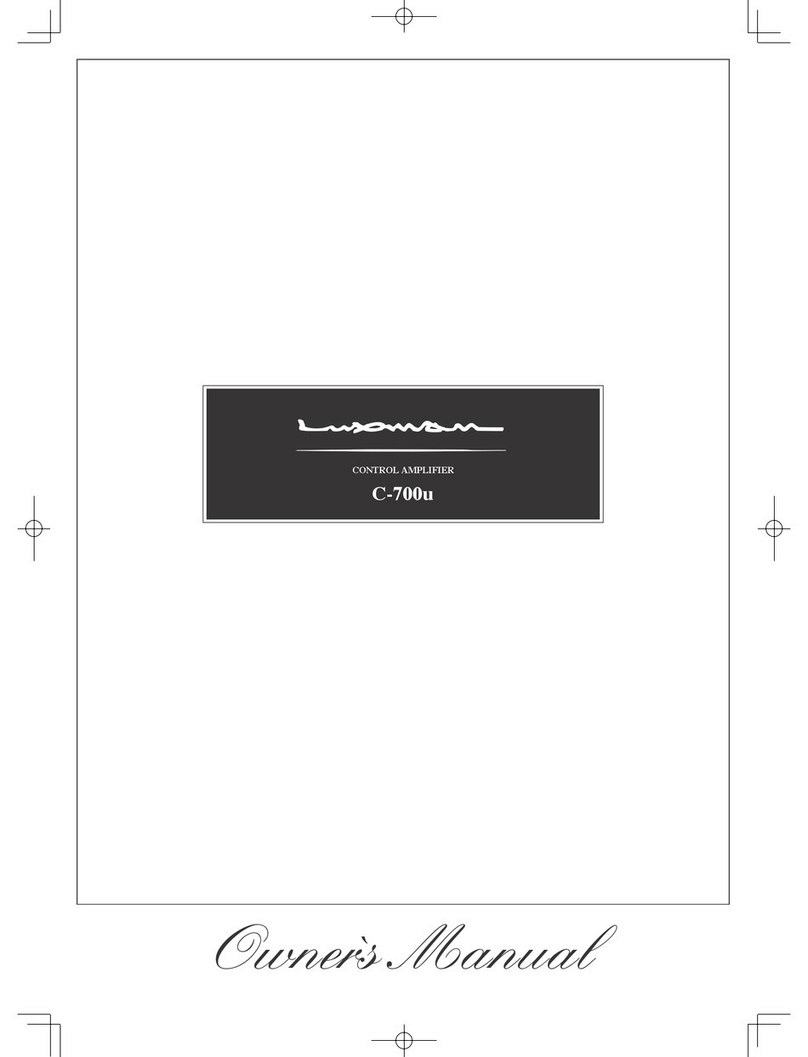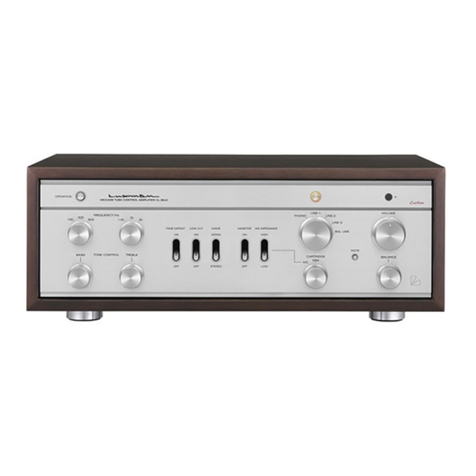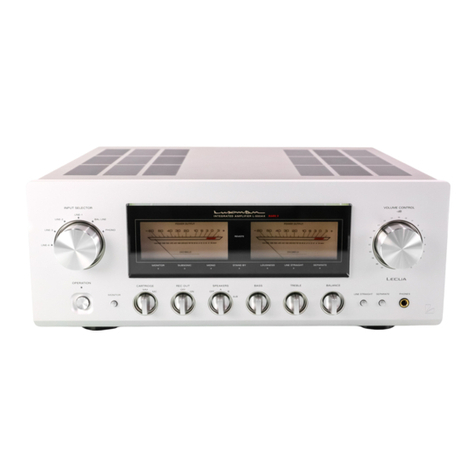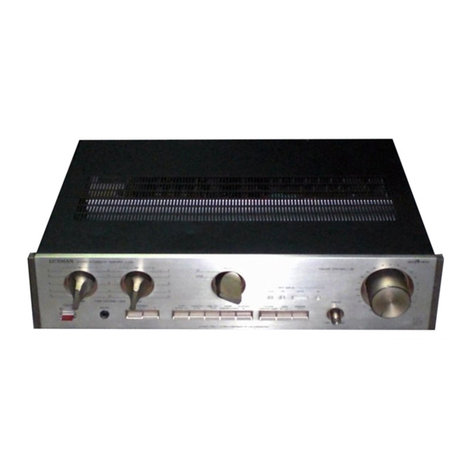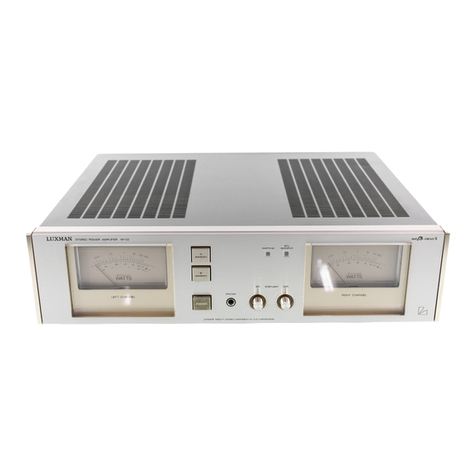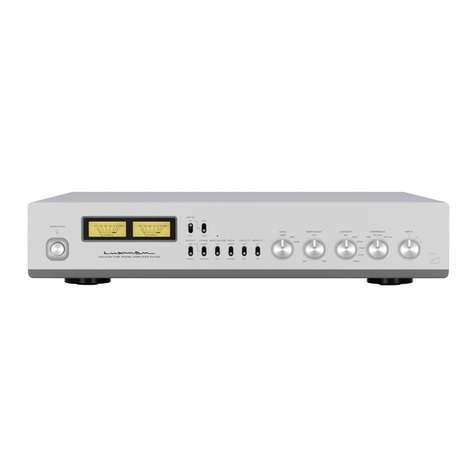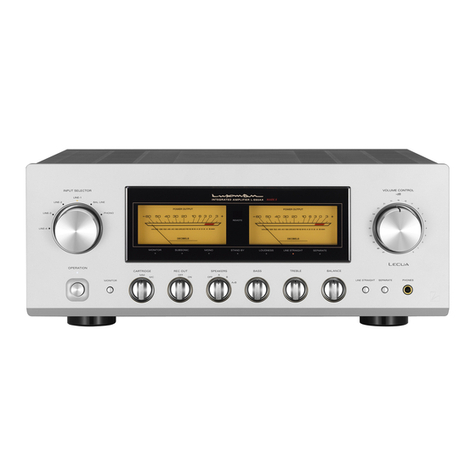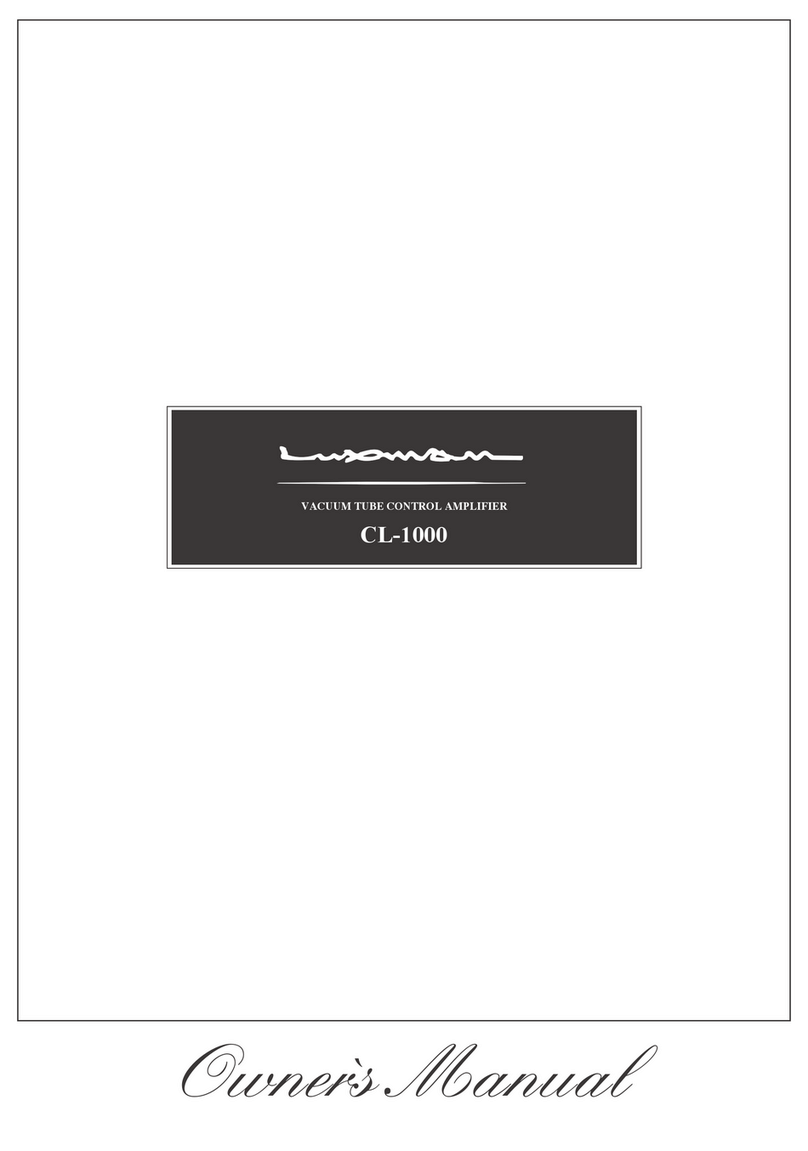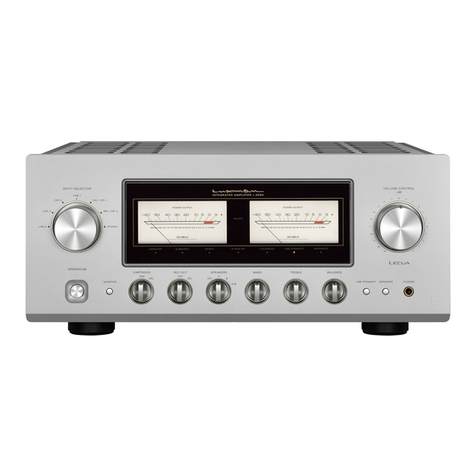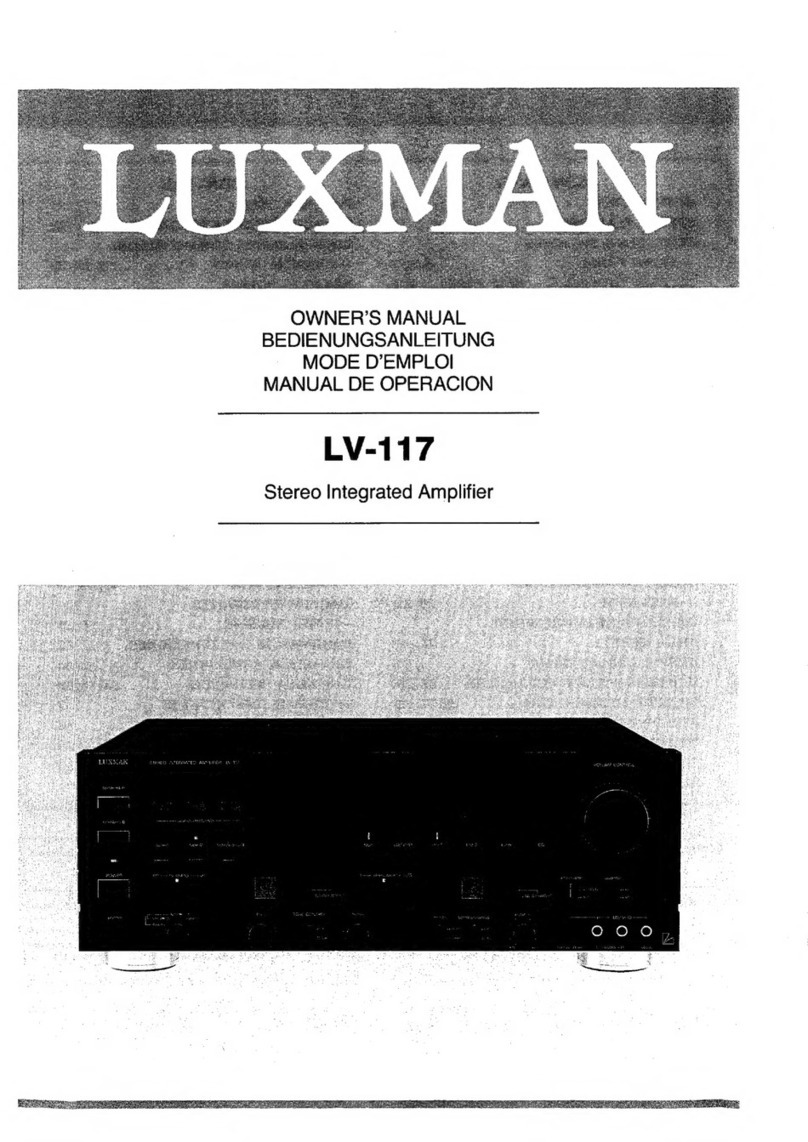
VACUUM TUBE CONTROL AMPLIFIER CL-38uSE
3
7. Monitor switch (monitor)
Selects the monitor input terminal (MONITOR) on the rear
panel.
on: Enables to reproduce the data from the recorder.
off: Enables to reproduce the data from the source se-
lected with the input selector.
8. Input selector
Selects an input device such as a CD/DVD player or a tuner
connected to each input terminal. This selector has 5 posi-
tions consisting of PHONO, CD, LINE-1, LINE-2, and LINE-
3 that correspond to each input terminal on the rear panel.
To select an input source, set the indicator to the position of
the source to be reproduced.
9. Pilot light
Turns orange when the power is turned on.
10. Volume control (VOLUME)
Adjusts the sound volume.
Sound is not generated when this control is rotated coun-
terclockwise to the end. The sound volume gradually be-
comes higher as the control is rotated clockwise.
11. Remote sensor (R)
Receives signals from the accessory remote control. Do not
block the front of the photo receiver.
12. Sound volume indicator
Indicates the sound volume level.
This indicator blinks during the muting time immediately af-
ter turning on the power and at activating the mute function
using the main unit or remote control.
13. Balance control (balance)
Adjusts the balance of sound volume between right and left
channels. Rotating this knob counterclockwise makes the
left sound volume enhanced, and rotating the knob clock-
wise makes the right sound volume enhanced. This knob
shall be set to the center position under normal conditions,
and rotated to make adjustment if necessary.
14. Mute button (mute)
Temporarily mutes the sound. Pressing this button activates
the mute function and the sound volume indicator blinks.
No sound is generated. Pressing this button again to cancel
the mute function allows sound to be generated.
15. Cartridge selector (cartridge)
For analog record playback, the input selector should be
set to PHONO, and adjusting the input impedance of the
amplifier may be required depending on the impedance of
the cartridge to be used.
The input impedance of the amplifier is selectable with the
cartridge selector.
The selectable positions are MM, MC high, and MC low.
Select a position in accordance with the input impedance
specified in the owner's manual of the cartridge or to your
taste.
Cartridge selector MM MC high MC low
Impedance 47 kΩ 100 Ω 30 Ω
16. Tone control for treble (treble)
Controls the frequency characteristics in the high frequency
range. When this switch is set in the center position, flat
frequency characteristics is obtained.
Rotating the knob clockwise makes the high frequency
range enhanced, and rotating the knob counterclockwise
makes the high frequency range attenuated.
17. Tone control for bass (bass)
Controls the characteristics in the low frequency range.
When this knob is set to the center position, flat frequency
characteristic is obtained.
Rotating the knob clockwise makes the low frequency
range enhanced, and rotating the knob counterclockwise
makes the low frequency range attenuated.
